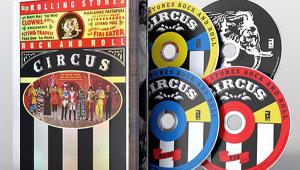The Future of Surround Sound Page 3
Se7en (.1)
I’ve already mentioned that most of the speakers you see arrayed in theaters aren’t individually addressable — at least not how we’re used to on the home side. One change that a cinema making an upgrade for Atmos must implement is modifying its current setup with a way to address each speaker. This may mean new wiring, new amps, or both. The “flagship” theaters in each cinema, the ones that show the blockbusters, may get dozens of channels, including new ceiling speakers. The smaller theaters, the ones that show the movies approaching their sell-by date, might only get an Atmos decoder and a few additional channels.
However, if a theater wants to claim it’s an Atmos venue, it will need at least 7.1 plus two height channels (9.1). How many additional channels get added beyond that is up to the cinema owner. Atmos also requires all the speakers to be full range, or to at least have a subwoofer on the same channel. (This is to preserve timbre from the massive front speakers behind the screen.)
Dolby estimates that an upgrade to Atmos, including the height channels, will require an investment of between $25,000 and $30,000, but it will vary depending on how far the theater wants to go and what equipment it has. Compared with the cost theaters recently had to eat when upgrading to digital projectors, 3D-friendly screens, etc., this is nothing.
Vertigo
I mentioned above that a minimum of two height channels are a requirement for Atmos theaters. Now, I know what you’re thinking: The two attempts at height channels in the home, Dolby ProLogic IIz and Audyssey DSX, have been met by the market with a resounding “meh.” But the most likely reason that neither has caught on in great numbers is that there’s no source material with height channels built in; in current systems they’re a post-processed effect.
There is something to height channels, though, beyond the “Oooh, sounds above me” novelty. For surround mixing in Atmos, having the ability to directly select the height speakers means the addition of a vertical dimension. Sure, the overhead pans I waxed poetic about in this feature’s opener are a possibility, but there’s more to it than that. A sound designer or mixer can bring sounds partway toward the ceiling but still locate them on a wall (and not specifically over your head). One of the examples that Dolby mentions is placing sounds in the line-of-sight of a character. Imagine a door slamming, and the heroine looking out of the screen, seemingly toward the theater wall. The sound designer can now place that door slam precisely at the point where she’s looking, instead of vaguely behind the audience or somewhere on the wall. I’d argue that this capability will actually serve to reduce the gimmicky nature of some surround mixes. Sound designers can also — and this is even better — use all the surround speakers to create a dome of sound, enveloping the listener in ambience more effectively than any previous sound system. We hear in three dimensions, so being able to mix sound in three dimensions can only increase fidelity.
To Infinity, and Beyond
At the moment, there are fewer than two dozen Atmos-equipped theaters around the country. However, Dolby plans on expanding rapidly, with more than 1,000 theaters planned by the end of 2013. The real question is whether studios will sign on. Disney/Pixar already sees the potential. Its animated film Brave was the first title released with an Atmos soundtrack. Without extensive studio adoption, though, Atmos isn’t going to happen. Dolby smartly touts the format’s ability to reduce the time required to mix a movie soundtrack. That means saving money, and the studios are all about that. The cinema owners? If the marketing is done right, people might — might — be pulled in by the promise of a new surround format, especially if it offers something new like height speakers.
So what about Atmos in the home? It’s currently a theater-only format, but Dolby seems suspiciously noncommittal about its plans to bring Atmos to home A/V gear. Noncommittal in a wink-wink, nudge-nudge kind of way. My read on this? Of course it’s going to bring it to the home, but it first needs to get some movies mixed in Atmos, and to create an installed base of theaters by offering cinema owners a step up from the existing home surround sound experience. Only then will it talk about bringing Atmos to the home.
This is pure wild speculation on my part, but I wouldn’t be surprised if we hear discussions of at-home Atmos by fall 2013. The potential is rather significant, if you think about it. No more 5.1 or 7.1 speaker systems and their rigid placement requirements. You can use as many speakers as you feel you need, and then let the Atmos processor figure out how to best deliver surround sound from what you’ve got. Could you imagine a future where a surround processor sends wireless signals to self-powered speakers placed in your room in spouse-convenient locations, yet still get a convincing surround effect? A 10.2 system that’s less obtrusive than a current 5.1 one? Maybe, maybe not. But the potential is there, and the revolution is coming.
- Log in or register to post comments






























































